|
69. Pararge aegeria (Linnaeus, 1758) / Speckled wood / Nymphalidae – Satyrinae
NL: bont zandoogje / D: Waldbrettspiel / F: tircis, l’argus des bois
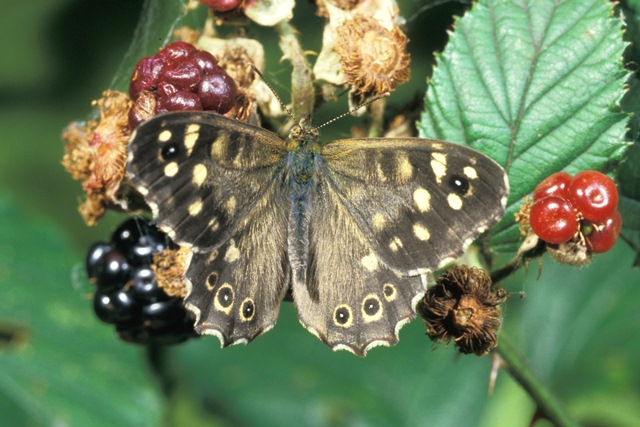 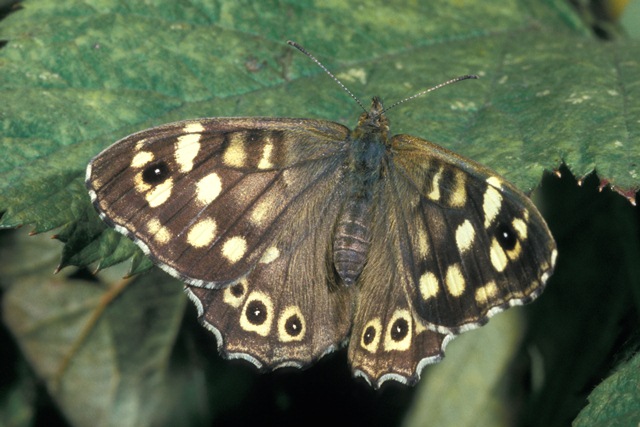 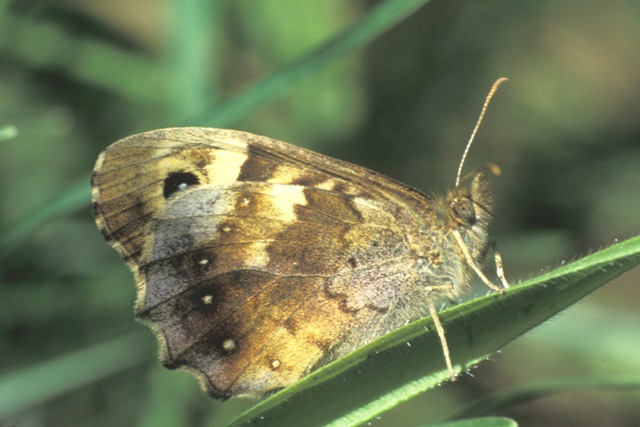
Photographs: Frits Bink ©.
Medium-sized, wing length 21 (19-22) mm. In the Benelux in all countries in landscapes rich in woodlands, rides and open places in the wood, recently increasing and now also in parks and gardens.
Butterfly is on the wing from April until early-October, there are two peaks, mid-May and early-August but there is a possibility for three broods per year. It is known from maritime to mild continental climates, heat sum for one generation per year 400°d and the tolerated maximum is 3000°d, corresponding climate windows are 19 weeks and whole year open.
In northern Europe it produces only one brood per year and hibernates as pupa, in the south it hibernates usually as larva and occurs in at least three broods per year. In very hot locations, it occurs in gardens which are watered throughout the summer.
In England the species varied in its distribution, a century ago it decreased strongly but after 1940 it recovered and became established in Scotland and Ireland (Asher et al. 2001: 244-247). In the Netherlands, this period of increased distribution was noticeable by its appearance in urban areas.
Ecological characteristics
Behaviour over time
Overwintering: as either larva or pupa within a tussock of its host-plant.
Reproduction: oviposition starts after 3-5 days when the body contains about 36 eggs, potential production 5 times as much, female lays about 17 eggs per day.
Larval feeding periods: from early-April until end-October.
Generations: one to three broods per year.
Spreading of risk: spread in larval growing rate and stage of overwintering.
Life cycle: egg 8 (5-12) days; larva fast growing form 24 (17-30) days, slow growing form 8-14 weeks; pupa 15 (10-28) days in summer, or 26-31 weeks in winter.
Life span of adult: rather long, 3 weeks.
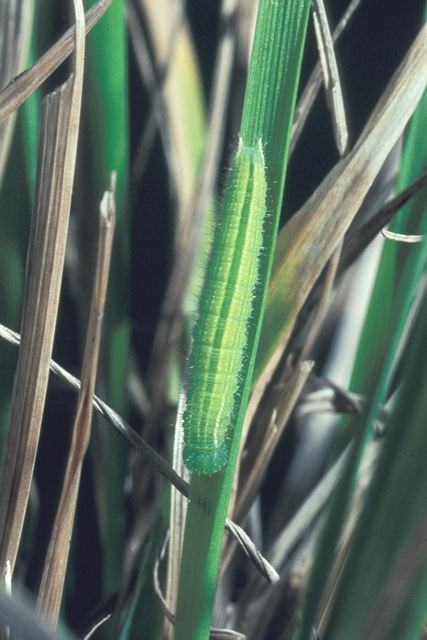 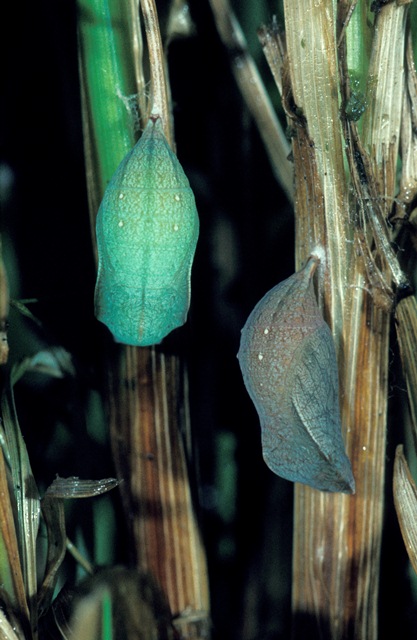
Photographs: Frits Bink ©.
Behaviour in space
From stay-at-home to migrant: stay-at-home, spatial requirement modest.
Finding a mate: male perches and displays courtship in front of a female.
Orientation in the landscape: all kind of edges between wood or shrub and tall grass vegetation, open places in woods or rides.
Oviposition: in a carefully chosen position in a grass tussock.
Defence
Threats from other organisms: it suffers from avian predation.
Threats from the environment: adults are rather sensitive to heat and drought.
Feeding habits
Adult: nectar and fruit, the butterflies are fond of overripe blackberries.
Larva: not selective.
Larval foodplants
Plant species: Poaceae, e.g. Dactylis glomerata, Deschampsia cespitosa, Festuca gigantea, Melica nutans, M. uniflora, Poa pratensis.
Journal
Rearing experiment based on specimen from Walbach, Vosges, France:
7 September 1981: female captured.
2 October: differentiation noted in size of the larvae 8 to 14 mm in length.
18 October: 18 last instar larvae 18-27 mm in length,
7 larvae 16-18 mm in length,
3 larvae 10-12 mm in length.
Larvae reared on a Festuca sp were put on Arrhenatherum elatius and refused this as food.
24 October: biggest larva 29 mm in length.
28 October: first pupa.
2 November: nine pupae, both brown and green colour forms, one larva.
20 November: last larva pupated.
Overwintered indoors:
12 February 1982: three butterflies appeared in the room, obviously from escaped larvae.
10 April: five pupae hatched.
Overwintered outdoors:
4 April1982: in Festuca gigantea pot with overwintering pupae a larva in last instar discovered.
18 April: larva fully grown.
3 May: larva pupated.
16 May: pupa hatched, female.
Table 69-1. Results of dissections

Table 69-1a. Oviposition sequence

Table 69-2. Collection and observation localities
B, Ethe, 240 m, 49° 36’ 25”N – 5° 35’ 50”E; 29 May 1966, 19 June 1983, 11 July 1984, 23 May 1985.
B, Nîsmes, Tiènne-Breumont, 215 m, 50° 04’ 40”N – 4° 32’ 35”E; 28 May 1982.
B, Theux 50° 33’ 20”N – 5° 49’ 50”E; 30 April 1983.
F, Ambleteuse 50° 48’ 09”N – 1° 36’ 57”E; 31 May 2001.
F, Brittany, Telgruc-sur- Mer 48° 12’ 25”N – 4° 22’ 25”W; 29 September 2004.
F, la Grande Brière 47° 23’ 42”N – 2° 17’ 22”W; 24 September 2004.
F, Lorraine, Lion-devant-Dun, 300 m, 49° 23’ 40”N – 5° 14’ 03”E; 12 June 1984.
F, Vosges, Katzenkoepfle, 565 m, 48° 01’ 54”N – 7° 06’ 04”E; 21 August 1984.
F, Vosges, Walbach,350 m, 48° 04’ 12”N – 7° 12’ 44”E; 7 September 1981.
GB, Oxford, Great Wood 51° 41’N – 0° 55’W; 20 July 1981.
NL, Bennekom, garden 51° 59’ 30”N – 5° 40’ 34”E; 2003-2014.
NL, Bennekom, de Kraats 52° 00’ 20”N – 5° 38’ 04”E; 3 July 2014.
NL, Kortgene 51° 34’N – 3° 48’E; 20 September 2003.
NL, Schuitwater 51° 28’ 35”N – 6° 07’ 43”E; 8 July 2003.
S, Gotland, Folhammar 57° 20’ 49”N – 18° 44’ 12”E; 19 June 2004.
S, Gotland, Lickershamn 57° 50’ 17”N – 18° 34’ 54”E; 3 July 2004.
Fig. 69-1. Pararge aegeria, phenogram adapted from Fichefet et al. 2008: 249.
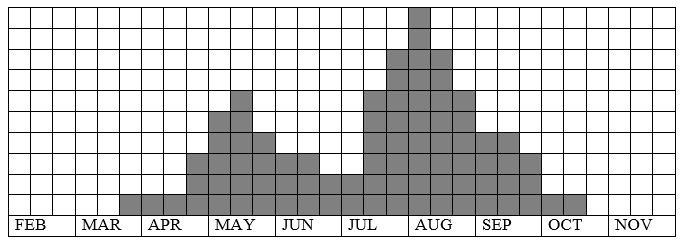
Fig. 69-2. Pararge aegeria, habitat characteristics.
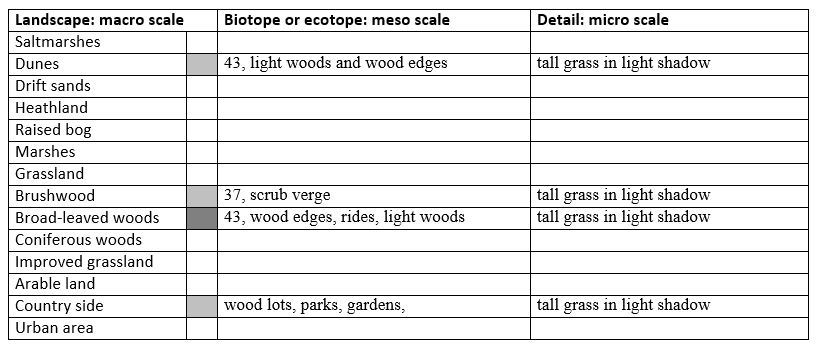
Fig. 69-3. Pararge aegeria, climate matrix, heat-sums 400 - 3000°d.
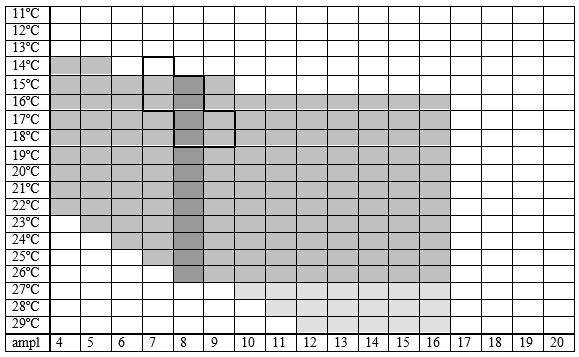
|











